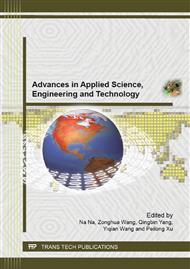p.297
p.301
p.305
p.309
p.313
p.320
p.325
p.329
p.335
The Influence of Plasma Arc Behavior on Ingot Top Surface Temperature Distribution during PAM Process
Abstract:
A 3D finite element model was established to simulate the top surface temperature evolution of Ti45Al8Nb (at.%) alloy ingot under the effect of plasma arc behavior during plasma arc cold hearth melting (PAM) process. According to the model, the top surface temperature distribution and its evolution was analyzed under different heat flux densities. Simulation results show that the position of maximum top surface temperature changes with plasma arc motion, and always located in the plasma arc heating regional center, and it increases first with time elapse and then decreases in the rest of time within one cycle. The results also show that the top surface temperature is increased with the increase in heat flux densities, but the extent is not significant, and meanwhile the temperature distribution is more non-uniform and temperature gradient is greater with the increase in heat flux densities.
Info:
Periodical:
Pages:
313-319
Citation:
Online since:
June 2013
Authors:
Price:
Сopyright:
© 2013 Trans Tech Publications Ltd. All Rights Reserved
Share:
Citation:


